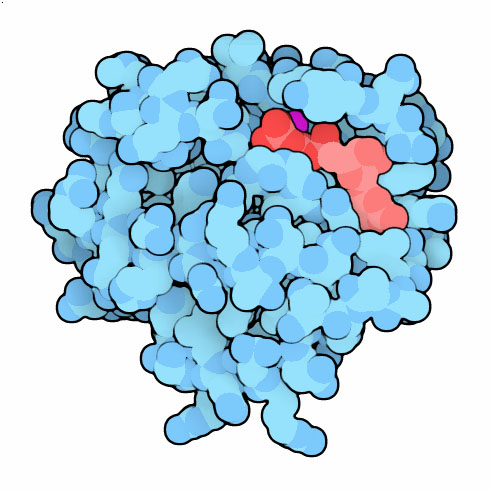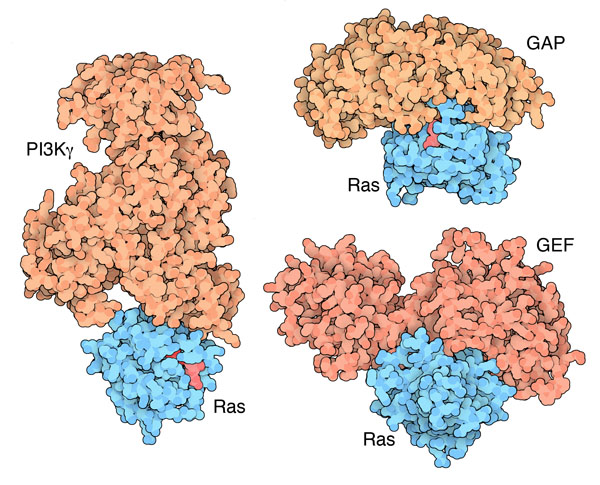Ras protein
- signaling
- Non-small cell lung cancer
- One way to strengthen signals is to link them to a process that is chemically irreversible, like the cleavage of ATP or GTP.

- Ras protein, PDB entry 5p21 , uses this approach. It is normally in the “off” state, with GDP bound in the site. To turn it “on,” the GDP is swapped for GTP. Then, after the signal is delivered, the GTP is cleaved to GDP and phosphate, turning the protein firmly off. It is particularly important that Ras has an unambiguous off state, because it is intimately involved in the control of cell growth.
Partners of Ras
Ras is at the middle of a complex signaling network that delivers messages about growth, and is assisted by many different proteins. GEF proteins (guanine nucleotide exchange factors), such as Sos-1 shown here (PDB entry 1bkd ), turn the Ras switch on. They wrench open the binding site, allowing GDP to exit. Once GTP has bound in the empty site, the on state interacts with effectors like PI3Kγ (PDB entry 1he8 ), a lipid kinase that phosphorylates lipids in the signaling network. Ras will then slowly break the GTP, but the process is accelerated by GAPs (GTPase-activating proteins), such as p120GAP shown here (PDB entry 1wq1 ).

Ras signaling
Ras Inhibitors
Questions
- Use PyMOL to determine which Ras residues to sotorasib and adagrasib interact with.
- Do you think these Ras inhibitors first bind and then covalently react with Cys or vice versa?